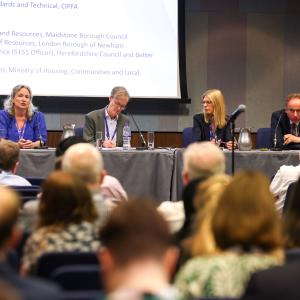Public sector pay seems to be growing faster than private sector earnings. But scratch the surface and it's mostly down to smoke and mirrors
Some extraordinary pay figures were published by the ONS on 12 September. At first glance they show that public sector earnings, at 2.0 per cent, grew faster than private sector earnings, at 1.8 per cent, in the year to July 2012. How could this be? Is reality being stood on its head?
The answer is that something unpredictable has happened to public sector earnings, simultaneously with something unexpected happening in the private sector.
Average weekly earnings growth in the public sector had been falling back towards 0.6 per cent in the first months of this year, under the impact of the government’s pay freeze policy. But since April the trend has moved upwards to 1.5 per cent in June and 2.0 per cent in July. Some commentators had mistakenly claimed this was because of progression pay boosting the figures.
In fact, as we discovered today, the increase has largely been caused by the ONS being obliged to reclassify 6th form and further education colleges from the public sector to the private sector, which was announced in a separate release on public sector employment.
This reclassification of 196,000 teaching and support staff has apparently increased average earnings in the public sector by approximately 0.6 and 0.8 per cent. Their average pay was clearly below the average for the rest of the public sector and removing them has boosted the average weekly earnings figures for the remaining public sector. In addition, the reclassification has had a downward impact on private sector earnings of between 0.1 and 0.2 per cent. This impact is diluted as the private sector is so much bigger.
In addition there were a small number of relatively large bonuses in the public sector which had an effect of the June figures adding up to 0.2 per cent to the three month trend. Bonuses are comparatively rare in the public sector so any movement tends to have an exaggerated impact.
Without these peculiarities, the trend would have been closer to 1 per cent, more in line with expectations. These were based on the fact that those earning under £21,000 in the NHS received rise of £250 in April and with some modest progression payments coming into effect.
Meanwhile, in the private sector earnings growth was stronger in a number of sectors but lower bonuses in finance led to the bizarre statistic that total pay growth in this sector hit zero in July 2012. But regular pay growth , which excludes bonuses, was 2.0 per cent.
In other parts of the private sector, total earnings growth in manufacturing was 2.6 per cent, in construction 2.5 per cent and in wholesale, retail, hotels and restaurants was 2.2 per cent.
So if you spot any of those daft articles in the media which frequently mishandle the earnings figures to argue a lopsided case, please refer them to this explanation before they stand reality on its head. And try asking them to explain why 6th form colleges and further education colleges have been reclassified to the private sector.
Alastair Hatchett is head of pay and HR services at Incomes Data Services









